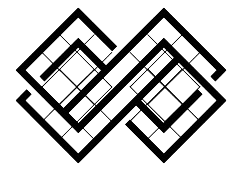Are you ready to harness the sun’s energy and create your own solar power system? Whether for personal use or emergency preparedness, a DIY solar setup is a rewarding project that can provide renewable energy and reduce reliance on the grid. This guide walks you through the essentials, from planning to execution, with clear, actionable steps.
Why Build a DIY Solar Power System?
Solar energy is sustainable, cost-effective, and increasingly accessible. A small DIY solar power system allows you to:
- Power essential devices during outages or remote trips.
- Save on energy costs by supplementing your grid use.
- Reduce your carbon footprint while gaining energy independence.
Tools and Materials Needed
Before diving in, gather these essentials:
Tools:
- Screwdriver set
- Wire cutters and strippers
- Multimeter for testing voltage and current
- Drill and drill bits (optional for mounting)
- Safety gear (gloves and goggles)
Materials:
- Solar panels: Choose monocrystalline panels for efficiency or polycrystalline panels for affordability.
- Charge controller: Regulates the flow of electricity from panels to batteries.
- Battery: Deep-cycle batteries like lithium-ion or lead-acid are ideal for energy storage.
- Inverter: Converts DC (direct current) from the panels to AC (alternating current) for appliances.
- Wiring and connectors: Ensure compatibility with your system components.
- Mounting brackets: Secure the solar panels in place.
Planning Your Solar Power System
Step 1: Determine Your Energy Needs
Calculate the total wattage of the devices you want to power. For example:
- A laptop: ~60W
- A LED bulb: ~10W
- A fan: ~50W
Add the wattages to estimate your daily energy consumption. Multiply this by the number of hours you’ll use them daily.
Example Calculation: If you need 500Wh (watt-hours) per day, plan a system that generates at least 700Wh to account for inefficiencies.
Step 2: Choose the Right Solar Panels
Match your energy needs with the panels’ output. Solar panels are rated by wattage, such as 100W or 200W.
- Tip: For portable or compact setups, consider foldable solar panels.
- Panels should be positioned in areas receiving maximum sunlight, typically south-facing in the northern hemisphere.
Step 3: Select the Battery Type
The battery stores energy for use when the sun isn’t shining. Consider:
- Lithium-ion batteries: Lightweight, durable, and efficient.
- Lead-acid batteries: Budget-friendly but heavier and require maintenance.
Step 4: Add a Charge Controller
A charge controller protects the battery from overcharging or discharging too much. Select a model compatible with your solar panel and battery specifications.
Step 5: Incorporate an Inverter
Inverters convert DC electricity to AC, enabling you to power standard appliances. Match the inverter capacity to the combined wattage of devices you’ll run simultaneously.
Building Your DIY Solar Power System
Follow these steps to assemble your system safely:
- Install the Solar Panels:
- Mount the panels securely using brackets.
- Angle them towards the sun to maximize exposure.
- Connect the Charge Controller:
- Attach the panels to the controller using the correct wires.
- Follow polarity markings (+/-) to avoid damage.
- Connect the Battery:
- Link the charge controller to the battery.
- Use connectors and ensure a snug fit.
- Set Up the Inverter:
- Connect the battery to the inverter.
- Ensure the inverter’s capacity matches your appliances.
- Test the System:
- Use a multimeter to check the flow of electricity.
- Turn on devices to verify functionality.
Safety Tips for DIY Solar Projects
- Always use insulated tools to prevent electrical shocks.
- Double-check polarity connections to avoid damaging components.
- Install a fuse or circuit breaker for added protection.
- Avoid working on the system during rainy or wet conditions.
Common Questions
Can I expand my solar power system later?
Yes! You can add more panels and batteries as your energy needs grow. Ensure the charge controller and inverter can handle the increased load.
What maintenance is required for a solar setup?
- Solar panels: Clean periodically to remove dust and debris.
- Battery: Check charge levels and perform necessary upkeep (e.g., water refills for lead-acid types).
- Wiring: Inspect for wear or damage annually.
How much does a DIY solar power system cost?
A basic setup may cost $300–$1,000, depending on panel wattage, battery type, and system size. DIY systems save on labor costs compared to professional installations.
Advantages of a DIY Solar Power System
- Cost Savings:
- DIY projects can save you 50% or more compared to hiring professionals.
- Customizable Design:
- Tailor the system to meet your energy needs and available space.
- Hands-On Learning:
- Building your system deepens your understanding of solar technology.
Potential Challenges and How to Overcome Them
- Limited Sunlight:
- Use a battery with sufficient capacity to store energy for cloudy days.
- System Efficiency:
- Invest in high-quality components to minimize energy loss.
- Space Constraints:
- Opt for compact or foldable solar panels for tight spaces.
Final Takeaway
Building your first DIY solar power system is a manageable project that brings energy independence and environmental benefits. Start small, experiment, and expand as you gain confidence. By embracing solar power, you’re investing in a sustainable future while equipping yourself with valuable skills.
Resources
- Solar Energy Basics – energy.gov
- DIY Solar Panel Installation Tips – solarpower.org
- Beginner Guides to Solar – solarfoundations.org
Let me know if you need any edits or additional features for this blog!
